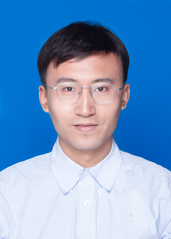My current research interests include
deep+kernel learning for PDE parameter estimation and system identification;
fractional modeling for engineerng problems;
mathematical modeling for complex systems.
computational fluid dynamics
Journal papers (#: equal contribution; *: corresponding author)
[28] Xin Zhao*, Xiaokai Nie, G. Pang, et al. Prior Distribution Estimation of Monitored Information in the Intensive Care Unit with the Hidden Markov Model and Decision Tree Methods. Journal of Healthcare Engineering, 2022.
[27] Guofei Pang*, Wanrong Cao. (2021) Pseudo-Likelihood Estimation for Parameters of Stochastic Time-Fractional Diffusion Equations, Fractal and Fractional, 5(3), 129.
[26] Lu, Lu, Pengzhan, Jin, Guofei Pang, Zhongqiang, Zhang, George, Karnaidakis*. (2021) Learning nonlinear operators via DeepONet based on the universal approximation theorem of operators, Nature Machine Intelligence, 3(3),218-229.
[25] Guofei, Pang, Marta, D'Elia*, Michael, Parks, and George, E. Karniadakis. nPINNs: nonlocal Physics-Informed Neural Networks for a parametrized nonlocal universal Laplacian operator. Algorithms and Applications. Journal of Computational Physics 422(2020):109760.
[24] Mehta, PavanPranjivan,Guofei, Pang*, Fangying, Song, and George, Em Karniadakis. Discovering a universal variable-order fractional model for turbulent Couette flow using a physics-informed neural network. Fractional Calculus and Applied Analysis 22, no. 6 (2019): 1675-1688.
[23] Guofei, Pang#, Lu Lu#, and George Em Karniadakis*. fpinns: Fractional physics-informed neural networks. SIAM Journal on Scientific Computing 41.4 (2019): A2603-A2626.
[22] Guofei, Pang, Liu Yang, and George Em Karniadakis*. Neural-net-induced Gaussian process regression for function approximation and PDE solution. Journal of Computational Physics 384 (2019): 270-288.
[21] Xu, Yiran, Jingye Li, Xiaohong Chen, and Guofei Pang*. Solving fractional Laplacian visco-acoustic wave equations on complex-geometry domains using Grünwald-formula based radial basis collocation method. Computers & Mathematics with Applications (2019).
[20]Lischke, A.#, Pang, G# , Gulian, M.#, Song, F., Glusa, C., Zheng, X., Mao, Z., Cai, W., Meerschaert, M.M., Ainsworth, M. and Karniadakis, G.E.*. “What is the fractional Laplacian? A comparative review with new results.” Journal of Computational Physics 404 (2020): 109009.
[19] Guofei, Pang, Paris, Perdikaris, Wei, Cai, and George, Em Karniadakis. Discovering variable fractional orders of advection–dispersion equations from field data using multi-fidelity Bayesian optimization. Journal of Computational Physics 348 (2017): 694-714.
[18] Guofei, Pang, Wen Chen*, and Zhuojia Fu. Space-fractional advection–dispersion equations by the Kansa method. Journal of Computational Physics 293 (2015): 280-296.
[17] Guofei, Pang, Wen Chen*, and K. Y. Sze. Gauss–Jacobi-type quadrature rules for fractional directional integrals. Computers & Mathematics with Applications 66.5 (2013): 597-607.
[16] Guofei, Pang, Wen, Chen*., & K. Y. Sze (2014). Differential quadrature and cubature methods for steady-state space-fractional advection-diffusion equations. Comput. Model. Eng. Sci, 97, 299-322.
[15] Guofei, Pang, and Wen, Chen*. Symmetric singular boundary method for potential problems with mixed boundary conditions. Engineering Analysis with Boundary Elements 56 (2015): 49-56.
[14] Guofei, Pang, Wen, Chen*, and K. Y. Sze. A comparative study of finite element and finite difference methods for two-dimensional space-fractional advection-dispersion equation. Advances in Applied Mathematics and Mechanics 8.1 (2016): 166-186.
[13] 庞国飞, 陈文*, 张晓棣, & 孙洪广. (2015). 复杂介质中扩散和耗散行为的分数阶导数唯象建模. 应用数学和力学, (1000-0887), 36(11).
[12] 庞国飞,陈文*. (2017). 基于 Riesz 势空间分数阶算子的非局部粘弹性力学元件. 固体力学学报, 38(1), 47-54.
[11]Mamikon, Gulian*, and Guofei, Pang. Stochastic Solution of Elliptic and Parabolic Boundary Value Problems for the Spectral Fractional Laplacian. arXiv preprint arXiv:1812.01206 (2018).
[10] Chen, Wen*, and Guofei, Pang. A new definition of fractional Laplacian with application to modeling three-dimensional nonlocal heat conduction. Journal of Computational Physics 309 (2016): 350-367.
[9] 李源, 陈文*, 庞国飞. (2014). 应用分数阶导数模拟桩屏障对粘弹性 SH 波的隔离. 应用数学和力学, 35(9), 949-958.
[8] Li, Weiwei, Wen Chen*, and Guofei Pang. Singular boundary method for acoustic eigenanalysis. Computers & Mathematics with Applications 72.3 (2016): 663-674.
[7] Sun, H., Liu, X., Zhang, Y., Pang, Guofei., & Garrard, R. (2017). A fast semi-discrete Kansa method to solve the two-dimensional spatiotemporal fractional diffusion equation.Journal of Computational Physics, 345, 74-90.
[6] Chen, W., Fang, J., Pang, Guofei., & Holm, S. (2017). Fractional biharmonic operator equation model for arbitrary frequency-dependent scattering attenuation in acoustic wave propagation. The Journal of the Acoustical Society of America, 141(1), 244-253.
[5]Hei, X., Chen, W., Pang, Guofei., Xiao, R., & Zhang, C. (2018). A new visco–elasto-plastic model via time–space fractional derivative. Mechanics of Time-Dependent Materials, 22(1), 129-141.
[4] Lu, Lu, Pengzhan, Jin, Guofei Pang, Zhongqiang, Zhang, George, Karnaidakis*. (2021) Learning nonlinear operators via DeepONet based on the universal approximation theorem of operators, Nature Machine Intelligence, 3(3), 218-229
Book chapters
[3] Guofei, Pang, and George Em Karniadakis. “Physics-informed learning machines for PDEs: Gaussian processes versus neural networks.” Emerging Frontiers in Nonlinear Science, 2020.
[2] E Kharazmi, Z Mao, G Pang, M Zayernouri, GE Karniadakis. Fractional calculus and numerical methods for fractional PDEs . First Congress of Greek Mathematicians, 91-126, 2020
[1] Guofei, Pang, Wen Chen. “Comparison of two radial basis collocation methods for poisson problems with fractional Laplacian.” Handbook of Fractional Calculus with Applications. Volume 3: Numerical Methods, 2019
